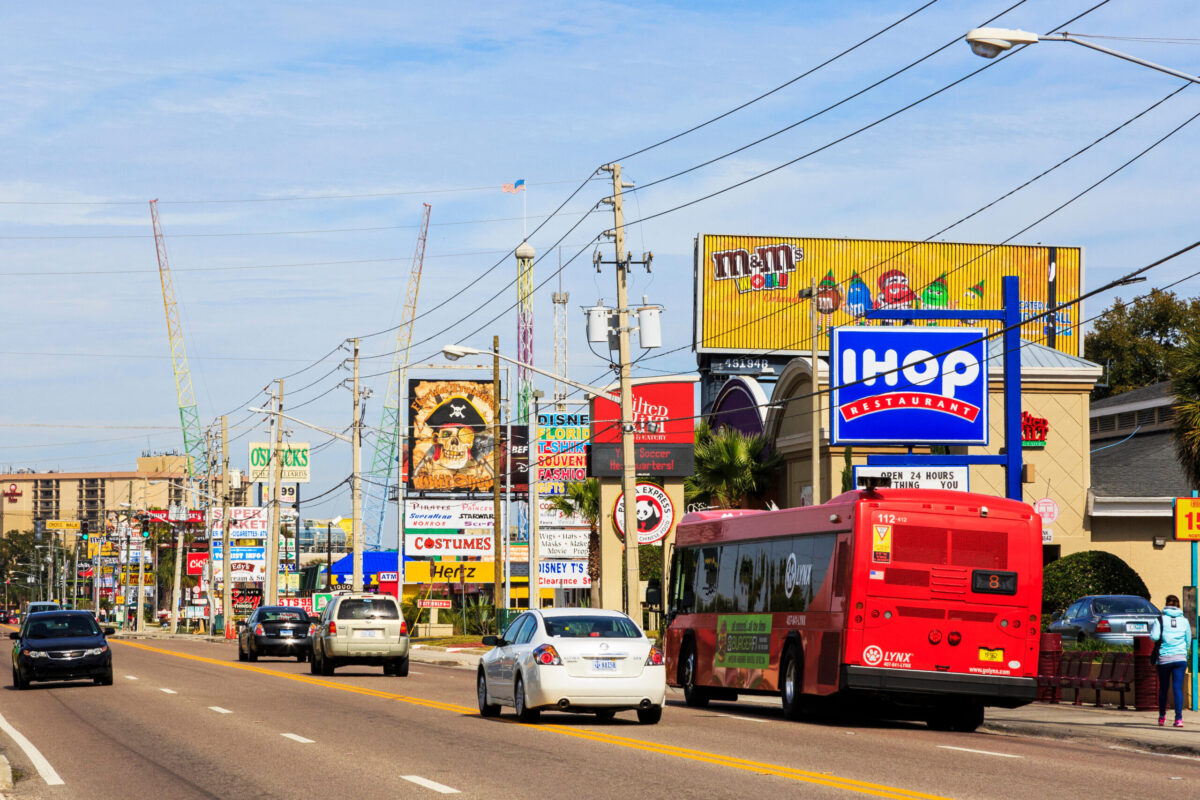If you’ve sat in traffic during your morning commute and wished for something better, you’ve felt the effects of urban sprawl first-hand. Here’s how urban sprawl is defined and what it’s doing to our local environments and communities.

Urban Sprawl Definition
So, what is urban sprawl? Urban sprawl is defined as “the rapid expansion of the geographic extent of cities and towns, often characterized by low-density residential housing, single-use zoning, and increased reliance on the private automobile for transportation.” Basically, it’s the tendency of cities to sprawl outwards, where homes are built in suburban areas and continue expanding outwards.
Is that a bad thing? While many people like the idea of owning a home away from others, when residences are increasingly built away from the city—with work and other essential places remaining within the city—many problems result from the situation. Here’s how urban sprawl can damage our local environments and the character and pleasantness of our cities.
Urban Sprawl Effects
Urban sprawl extends the environmental impacts of civilization over a larger area, thereby creating a host of issues. It also encourages and perpetuates transportation by car, as people commute to and from the city for work. Some of the resulting environmental effects include:
- Air pollution resulting from automobile dependency
- Water pollution caused in part by increases in impervious surfaces
- The loss or disruption of environmentally sensitive areas, such as critical natural habitats (e.g., wetlands, wildlife corridors)
- Reductions in open space
- Increased flood risks
- Overall reductions in quality of life
Urban sprawl also has negative social impacts. It engenders long commutes and traffic that deteriorate mental health and promotes unhealthy sedentary lifestyles. It also imposes stress on green space and other public areas, decreasing the quality of life and the visual character of the city overall.
Good urban planning is needed to mitigate urban sprawl and bring life back into the hearts of cities. By keeping residences and essential services centrally located, prioritizing green spaces, and de-emphasizing motor vehicle traffic, thoughtful urban design can support thriving, healthy, and beautiful cities around the nation.
Here at Scenic America, we value our country’s scenic beauty and want to see it persist. We work to preserve and promote our scenic byways, landscapes, and towns that define our nation’s visual character. Read about our principles of conservation, see what we’ve accomplished in 2021, or sign up for our newsletter to stay up-to-date on our work and how you can help.
Scenic America’s mission is to preserve and enhance the visual character and scenic beauty of America. Donate today to help us protect our beautiful places and the heart of our country’s character!